23 Evidence-Based Benefits of Chickpeas
What are Chickpeas
Also known as garbanzo beans, chickpeas come from the legume family.
They are large and roundish legumes with bumpy textures.
Chickpeas are one of the oldest consumed varieties of legumes on the planet.
In fact, they have been a prominent part of traditional diets for more than 7,500 years.
Even today, chickpeas are incorporated into daily diets and recipes in healthy populations across the globe.
These recipes mainly stem from Middle Eastern, African, and Mediterranean cuisines.
The only soybean surpasses chickpeas as the most cultivated legume in the world.
History
In the Middle East, archaeologists discovered the remains of chickpea cultivation from over seven millennia ago.
Moreover, in Palestine and Turkey, domesticated chickpeas were discovered in the cities of Jericho, Hacilar, and Cayonu.
During the Bronze Age, chickpeas were incorporated as a staple diet in Italy and Greece. In ancient Greece, they were called ‘erébinthos,’ and were consumed as a dessert or a snack.
The Romans prepared chickpeas in numerous ways, so they developed a plethora of varieties of the vegetable (such as Ram and Punic). Chickpeas could be roasted, eaten raw (when young), or cooked as a soup.
In addition, ancient Romans associated chickpeas with the goddess Venus, primarily due to the numerous medicinal benefits of the vegetable.
They also used chickpeas to boost semen production and treat menstruation and kidney stones. Wild chickpeas were thought to offer the most medicinal benefits.
Moreover, scientists discovered carbonized chickpeas at Neuss, Germany (a Roman legion fort), which date back to the 1st century.
Even Charlemagne’s Capitulare de villis mentions the vegetable. He referred to chickpeas as ‘cicer italicum’ in around 800 C.E.
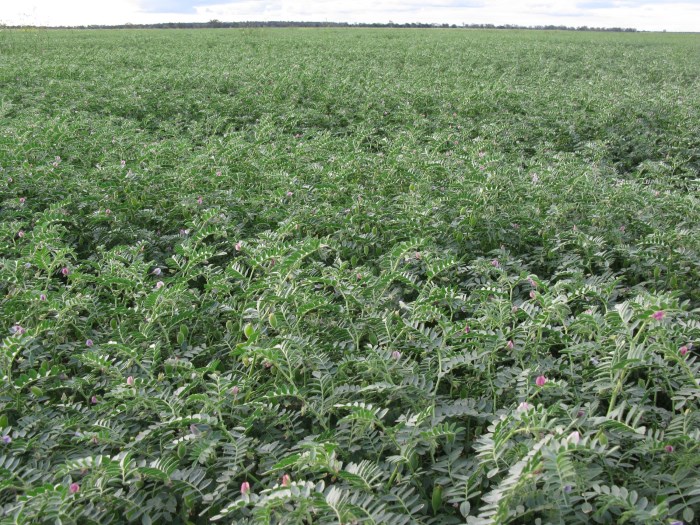
How Chickpeas Grow
Chickpeas are grown during winter seasons and need approximately 100 days to be fully ready to harvest.
This popular vegetable can be cultivated in tropical and/or subtropical climates. For optimal harvesting, it requires 100 millimeters of rain on an annual basis.
Chickpeas can be cultivated in temperate climates; however, you can expect a low yield.
The most popular places where chickpeas are traditionally grown include Mexico, the Mediterranean, India, and Western Asia.
Moreover, chickpeas can be adversely affected by certain plant diseases (which include anthracnose and blight).
That’s why it’s absolutely necessary to keep your cultivation area clean and free of debris.
Varieties
There are two primary varieties of chickpeas, ‘kabuli’ and ‘desi.’ Both names originated in Northern India.
Smaller chickpeas are known as desi; they’re dark and yellow on the inside.
Kabuli is the traditional whitish-beige chickpeas, which are more popular throughout the world.
These chickpeas have a bumpy texture and are round and thin. Kabuli chickpeas are widespread throughout the US and are easily available in all American supermarkets.
Below are some other types of chickpeas, which you may not be familiar with:
- Bengal Gram (Black Chickpeas)
The Bengal gram chickpeas are grown in India. There, farmers sun-dry the vegetables, which changes their color to a deep, rust-like color. But the taste doesn’t really change. They still have the same nutty taste and aroma that you’d get from traditional chickpeas.
- Chana
These chickpeas resemble yellow split peas. Mostly cultivated in India, they have a sweet aroma and a nutty taste, and they’re utilized for making chickpea flour.
- Chickpea Shoots
These shoots are seasonal, and they can sometimes be found in your local farmer’s market. Their feathery shoots are harvested from the chickpea plant, and they can be used to make a salad.
- Green Chickpeas
These delicious, sweet, fresh chickpeas are harvested young and tender. They’re quite common in almost every part of the globe.
Interesting Facts
This tasty little vegetable is quite special.
Eaten since ancient times, there are a plethora of reasons why chickpeas have successfully managed to stay on menus for thousands of years.
Therefore, here are some interesting facts you should know about chickpeas:
- There is evidence that Middle Eastern countries first harvested the vegetable 7,500 years ago. Chickpeas became quite popular around that time. Soon, their cultivation and demand increased throughout the ancient world, and numerous civilizations (including Egypt) began to cultivate and consume chickpeas.
- Chickpeas have a lot of other names, including garbanzo beans, Kabuli chana, desi chana, Ceci beans, Egyptian peas, and Bengal grams. However, garbanzo is the typical name in the US. In addition, the vegetable comes in a variety of colors (such as red, green, black, and brown).
- Chickpea cultivation has become an integral part of many agricultural endeavors. Chickpeas are valuable crops that offer an organic way of eliminating diseases during the cultivation of barley and wheat. In other words, farmers don’t have to utilize a lot of insecticides or fungicides, so chickpeas decrease carbon footprints. Chickpea plants are highly versatile, and they can be utilized to restore soils that have been depleted (especially of nitrogen). And because they have a deep root system, chickpeas help prevent soil erosion. Sometimes, farmers don’t even need to use fertilizers. Moreover, chickpeas are cultivated in drylands, so they minimally use agricultural water.
- The Australian government categorizes legumes as an important part of a healthy diet. Chickpeas are an excellent source of nutrients, protein, and fiber, and they can cause weight loss.
- Chickpeas are an excellent source of fiber (both dietary and soluble). These nutrients are important for keeping your metabolism in check and enhancing your digestive system. Soluble fiber plays an instrumental role in helping minimize cholesterol absorption, which keeps your bloodstream clean. Plus, it helps maintain your blood-sugar levels, which keeps your cardiovascular system healthy.
- Chickpeas can also optimally be used as cooking ingredients. The versatility of this vegetable allows for easy consumption. For example, you can just buy a couple of cans of chickpeas, mash them up, and add a bit of hot sauce. And voila! Instant hummus. Furthermore, you can add chickpeas to your favorite broth or soup. Or you can add them in salads or stir fry them with beef. The choices are limitless.
- Another interesting, surprising fact is that chickpeas were used as an alternative to coffee. In the 18th century, people used chickpeas to make caffeine-free beverages. Sure, it’s fair to feel a bit hesitant about trying chickpeas instead of coffee, but the taste is reportedly delicious.
- Chickpeas contain incomplete proteins. In other words, if you combine them with eggs or other protein-rich foods, you could create an effective alternative to meat. So they’re a must-have for vegetarians.
- India leads the global production of chickpeas. Back in 2013, reports stated that India had a total production of 8,832,500 metric tons of chickpeas. The runner-up for chickpea production was Australia.
Nutritional Facts
Chickpeas are one of the most popular types of legumes.
They’re incorporated into the diets of some of the healthiest people in the world.
Chickpeas are bursting with numerous antioxidants, minerals, nutrients, and vitamins (including magnesium, folate, vitamin C, calcium, zinc, phosphorous, vitamin B6, and potassium), which provide a comprehensive array of health benefits.
Plus, these vegetables are the foremost vegetables to consume if you’re trying to lose weight.
Chickpeas also keep your heart health elevated, which reduces the risk of several cardiovascular diseases and boosts your digestion.
The nutritional values below are further testaments of how chickpeas have evolved to become a superfood.
A single cup of chickpeas contains the following recommended daily values:
- 268 calories
- 5 grams of dietary fiber
- 5 grams of protein
- 2 grams of fat
- 84% manganese
- 71% folate
- 29% copper
- 28% phosphorus
- 26% iron
- 17% zinc
Health Benefits of Chickpeas
Help Maintain Blood Sugar
Chickpeas are a prime source of complex carbohydrates, which are present in all other types of legumes.
Your body gradually digests complex carbs, and stores it as energy to be used later.
This fact is pretty important because a majority of carbohydrates do not share the same types of properties and effects.
Some carbohydrates quickly increase your blood-sugar levels, which in turn result in energy fluctuations in your body. (These carbohydrates are also referred to as fast or simple carbs.)
Other carbs do the exact opposite, providing you with sustained energy (known as complex carbohydrates) (1).
Help Lose Weight
Chickpeas contain plenty of fiber and protein, which help with satiety.
In other words, you feel fuller longer. Therefore, this vegetable helps overcome midnight cravings.
In addition, the research identified that eating fiber can help enhance your weight loss efforts (2).
On top of that, chickpeas go with numerous recipes.
And they’re packed with complex carbohydrates (the macronutrients that provide you with a feeling of being full).
Plus, these beans also help maintain your blood-sugar levels, which give you more energy.
Incorporating fat-loss foods (such as chickpeas) is an efficient method of losing weight.
When the satiety factor kicks in, you’re less likely to grab your favorite bag of chips or chocolate chip cookies after dinner.
Eating processed foods and unhealthy snacks can endanger your weight loss routine and overall health.
If you pair garbanzo beans with lean protein or any other nutritious, wholesome foods (such as fruits and vegetables), you’ll be getting twice the benefits.
The best part about chickpeas is the fact that they’re pretty low in calories and high in fiber and protein.
Therefore, they’re a food of choice for people that are trying to control their eating habits, lose weight, or have bigger muscles.
With chickpeas, you really don’t have to worry about eating too many calories.
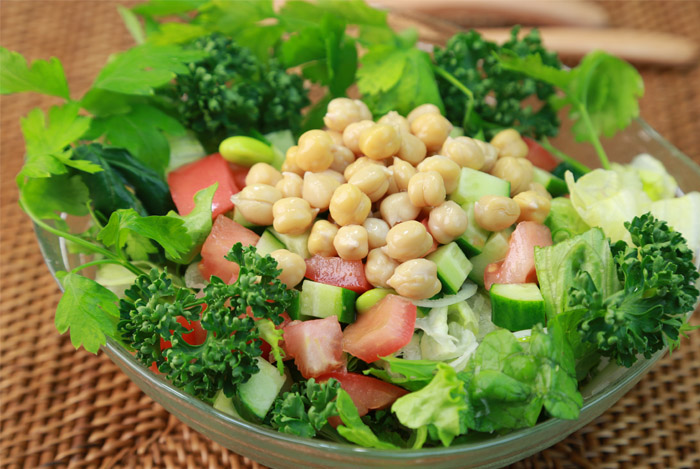
Help Boost Digestion
If you are making a list of the top 10 foods for a healthy lifestyle, you better include chickpeas.
Why? Well, that’s simple: they contain loads of fiber.
A single half-cup serving of chickpeas contains around 6 to 7 grams of fiber (3).
Try looking at things from a broader perspective.
Then you’ll see that a majority of people are adopting healthy diets, but many of them don’t get the daily recommended amount of fiber — which is quite alarming.
Dietary fiber plays an instrumental role in enhancing your metabolism, and it efficiently boosts your digestive system.
Fiber helps everything you eat effectively pass through your intestines, along your digestive tract.
So it prevents you from being constipated and having irritable bowels.
Fiber gathers bodily liquids and amalgamates them to the stool forming inside the stomach.
These liquids can also contain toxins that can be harmful to the body.
On top of that, fiber keeps your pH balance in check, which prevents all the toxins and bacteria from getting into your gut.
It helps increase the level of healthy bacteria and eliminates unhealthy bacteria.
Plus, it’s also important to understand that a decrease of flora bacteria in your stomach can cause a series of digestive complications.
Contain Starch
Chickpeas also provide starch. The starch in chickpeas is slow-burning.
In other words, your body won’t quickly break it down and convert it into glucose — which spikes your blood sugar.
Unlike the sugar content found in pasta, processed foods, refined flour, white bread, and soda, the starch in chickpeas takes a good amount of time to break down.
Starches are made of natural sugars (known as glucose).
The body utilizes glucose to streamline many important bodily functions.
But glucose can become an issue for people who are diabetic or pre-diabetic.
Digesting glucose from the starch found in legumes is pretty drawn-out.
This fact is very important for people with diabetes, who have to inject themselves with insulin to regulate their blood-sugar levels.
Therefore, chickpeas can provide diabetics with balanced blood-sugar levels.
However, it’s important to consult your healthcare professionals and reach a limited serving of these legumes every day (4).

Chickpeas and Cardiovascular Disorders
Research has proven that chickpeas can promote your heart’s health — by reducing the amount of unhealthy cholesterol in your body.
The right balance of cholesterol can help combat several cardiovascular complications (such as high or low blood pressure and hypertension).
It helps your body combat these issues in numerous ways, which reduces your chances of developing heart disease.
Since chickpeas contain a lot of fiber, they reduce all the fat that gathers around vital organs (including the heart).
Plus, garbanzo beans have lots of vitamin B6, which significantly minimizes the level of homocysteine in your body.
Having too much homocysteine can lead to developing various heart diseases (5).
Chickpeas and Cancer
Moreover, eating chickpeas on a regular basis may help reduce the chance of developing symptoms of cancer.
Some studies discovered that chickpeas may have certain protective components because they’re high fiber.
The studies also demonstrated that chickpeas can minimize the symptoms of colon cancer.
They’re instrumental in keeping the digestive system clean, healthy and free from all sorts of toxins and bad bacteria.
They promote the growth of healthy bacteria by balancing the body’s pH levels, which significantly minimizes inflammation.
In other words, the cancer cells in your body will not proliferate and spread (6).
Rich in Folate
Chickpeas contain plenty of nutrients, vitamins, and minerals.
For example, they’re a pretty good source of iron, zinc, phosphorous, essential B vitamins, and folate.
All of these nutrients play an important role in keeping your body healthy.
And if you’re a vegetarian, these nutrients are even more important for you.
So chickpeas can very well be the dietary inclusion they’ve been looking for (7,8).
Garbanzo beans contain high quantities of folate, which is otherwise known as vitamin B6.
This vitamin is vital for the body to create new cells, and it helps synthesize your DNA.
On top of that, folate helps your body bind with other B vitamins, lean proteins, and amino acids.
Having a folate imbalance can lead to numerous health complications, which may include anemia, weakened immunity, and poor metabolism.
In pregnant women, folate deficiencies can lead to spina bifida (damage to the neural tube).
Contain Zinc
Garbanzo beans contain a lot of zinc, which is a powerful mineral that helps smooth more than a hundred vital enzymatic reactions within your body.
This mineral streamlines all your bodily functions, which includes shielding your body against free-radical cellular damage (which is also known as oxidative cell damage).
Zinc also helps expedite wound healing.
It copies your DNA and plays an important role in creating hemoglobin in your bloodstream (9).
A zinc deficiency can result in numerous health problems, such as colds, poor eye health, leaky gut syndrome, diarrhea, infertility, and thinning hair.
And it can even stunt growth in children.
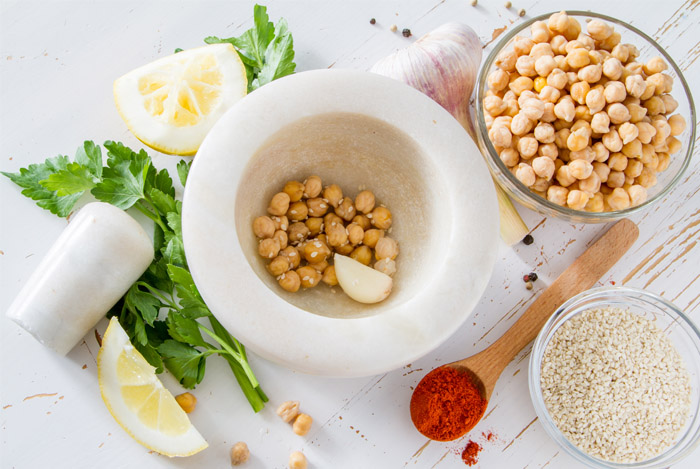
Help Boost Alkalinity
It’s important to realize that legumes have alkalizing properties.
Alkalinity helps the body balance its pH levels.
The more balanced these levels are, the less you have to worry about toxic build-up.
Incorporating chickpeas with a nutritious source of healthy fats (e.g., olive oil) significantly enhances the rate they’re absorbed into your body — which boosts their effects (10).
Moreover, garbanzo beans are a powerful source of two other essential nutrients: magnesium and manganese.
Chickpeas and Magnesium
12.5 grams (or one single tablespoon) of chickpeas contains approximately 14.4 mg of magnesium.
Numerous scientific studies on men have identified that a magnesium deficiency can be indirectly responsible for low testosterone.
Sadly, magnesium deficiencies are common in the majority of people in the US.
People don’t usually get the recommended daily amount of magnesium through regular dietary sources.
Chickpeas can become a wonderful source of magnesium if you have low testosterone.
If you combine them with other testosterone-boosting foods (such as fish and vegetables), you may not even have to use testosterone supplements to regulate your hormone levels.
However, it’s strongly recommended that you consult a medical professional before doing anything.
Testosterone levels in men significantly decline as they age.
But this problem is also starting to become a problem for younger men.
Testosterone levels in men decline as a result of low proteins.
As a result, your body begins to produce sex-hormone globulins.
These enzymes successfully bind with your body’s testosterone, which makes it impossible for it to utilize them (11).
Another study found that testosterone chose to bind with magnesium, rather than binding with the globulins.
This binding enhanced the levels of the hormone, so it provides the body with powerful anabolic benefits.
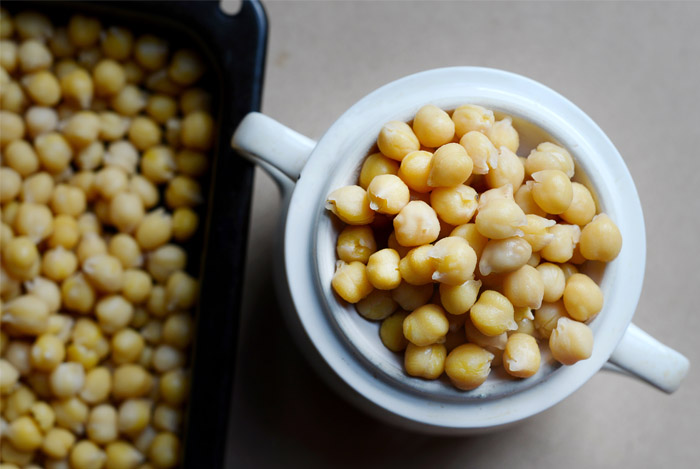
Chickpeas and Manganese
One cup of cooked chickpeas contains approximately 1.69 mg of manganese.
There are numerous health benefits of this important nutrient.
Manganese helps strengthen bones by providing your spine with an increasing amount of minerals for optimal growth and development.
In this regard, chickpeas can be a wonderful dietary inclusion for post-menopausal women.
A manganese deficiency is quite common in older women, so it’s very important to replenish the levels of this mineral.
Scientific research has also discovered that a manganese deficiency in women may lead to the development of osteoporosis.
Furthermore, manganese helps eliminate free-radical cells in the body.
These cells are capable of causing cancer and a number of other debilitating diseases.
However, manganese has powerful antioxidant properties.
So along with taking manganese supplements, it is also important to incorporate a cup or two of chickpeas to enhance your levels of this mineral.
Eliminate Wrinkles
Manganese also enhances skin health and reduces fine lines and wrinkles.
As a matter of fact, manganese is used to manufacture a majority of beauty products.
Essentially, manganese helps your skin generate the necessary energy to combat a free-radical infestation that causes wrinkles and lines in the first place.
The element detoxifies your skin, which increases its water-retention capability.
Combined with the other vital nutrients in chickpeas, manganese works as a catalyst to provide skin that looks supple and radiant.
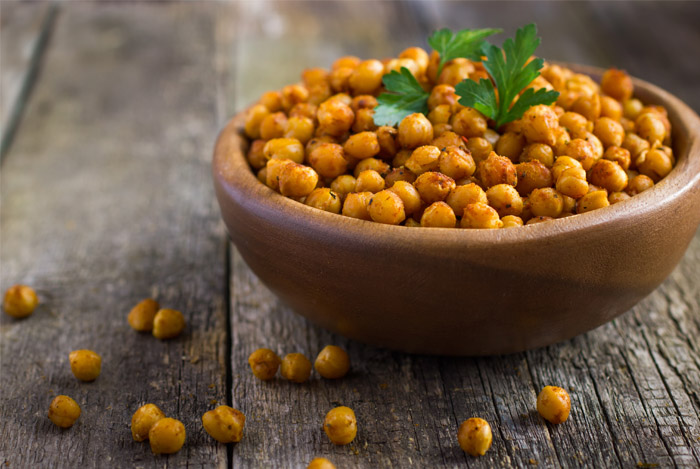
Good Source of Protein
Chickpeas can give you about 15 grams of pure protein per ½ cup.
You can cook them, steam them, or fry them in olive oil. Just make sure you also eat foods with amino acids (e.g., eggs) (13).
A protein deficiency can lead to several problems, including muscle exhaustion, fatigue, cataracts, cardiovascular disorders, poor skin health, and inadequate hormone production.
As chickpea protein is entirely plant-based, it’s become the food of choice for vegans around the world.
But even carnivores should incorporate chickpeas into their diets.
Source of Dietary Iron
A single cup full of chickpeas contains around 4.7 mg of iron.
Iron is one of the most important nutrients in the body.
An iron deficiency can lead to a plethora of health problems (the most common of which is anemia).
Anemia prevents your body from producing a healthy amount of red blood cells.
With an imbalance of these cells, you can experience several adverse effects, including weakness, fatigue, dizziness, and the inability to transport a healthy dose of oxygen to your bodily tissues (which causes them to become weak in the long term) (14,(15).
In addition, anemia can cause other health issues (such as hair loss and brittle nails).
Fortunately, you can curb this problem by taking iron supplements.
But why spend so much on supplements when you can naturally treat the problem?
Chickpeas are bursting with iron. So they’re budget-friendly, absolutely delicious, and the best, safest way to consume absorbable iron.
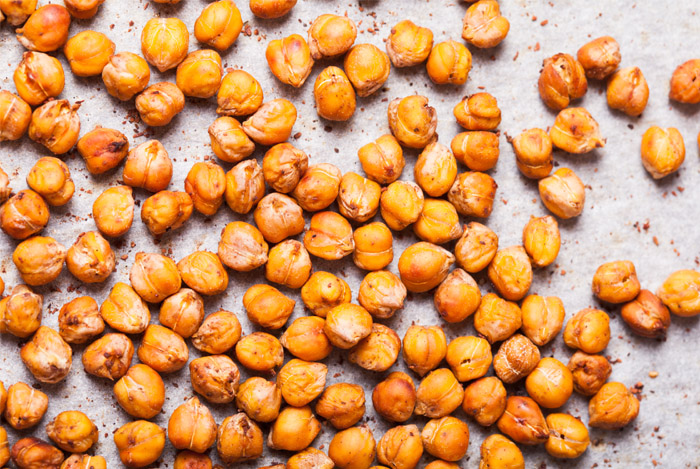
Chickpeas and Artery Health
Fiber helps make a gel-like component inside your digestive tract.
Combined with fatty acids, this substance help balance the levels of cholesterol in your bloodstream.
Soluble and insoluble fibers have been identified as major nutrients.
They help decrease the likelihood of developing hypertension.
On top of that, chickpeas help keep your arteries free from plaque, which in turn keep your blood- pressure levels in check.
Maintaining your blood pressure can greatly minimize the chances of suffering a stroke or heart attack.
As a matter of fact, there are plenty of reports that have determined that just a single serving of garbanzo beans (¾ cup, steamed or boiled) can considerably reduce the chances of hypertension, heart attacks, and strokes.
In other words, they keep LDL (bad cholesterol) out of your body (16).
Prevent Hair Loss
If you’re experiencing hair loss and are tired of taking different supplements, try incorporating chickpeas into your diet.
Chickpeas contain plenty of A, B and E vitamins, along with Omega fatty acids.
All of them can effectively promote hair growth (18). These nutrients can keep your scalp healthy and enhance blood circulation to your scalp.
You can add chickpeas to a variety of food items. The best thing to do is boil them and add them to your salad.
Improve Eye Health
Using chickpeas on a daily basis can also improve your eyesight.
There’s no question that we all spend a lot of time sitting in front of a computer screen, which can cause adverse effects on your eyes.
That’s why you need to ensure that you’re doing everything you can to restore your eye health.
Chickpeas are full of vitamin A, which is an essential vitamin for your mucous membrane, your skin, and your eyes.
So if you eat chickpeas every day, you can keep your vitamin A level regulated.
Therefore, you’ll improve your eyesight and be protected from infections and free-radical damage (19).
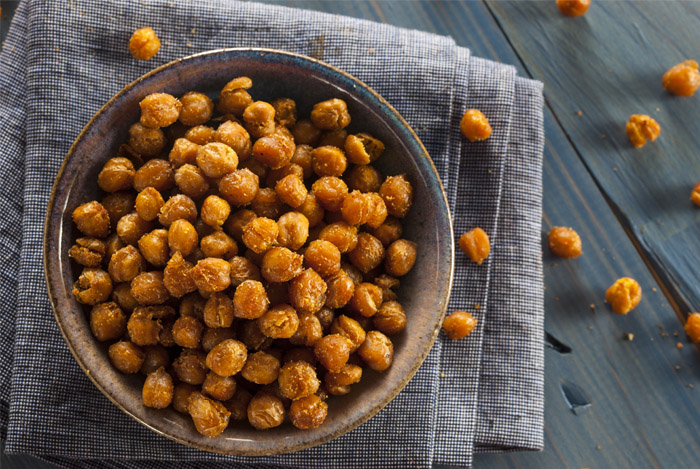
Chickpeas and B-Complex Vitamins
Chickpeas contain B6, B5 (pantothenic acid), B2 (riboflavin), and B1 (thiamin) (20).
According to several reports, chickpeas are among the richest sources of B6, which promotes your immune system.
And since chickpeas also have vitamin B5, they can simultaneously care for the digestive and immune systems.
Contain Vitamin A (and Beta-Carotene)
For every 100 grams of chickpeas, you get approximately 21 IU of vitamin A and 12 mcg of beta-carotene.
Vitamin A is good for maintaining your bone and eye health, and beta-carotene is a raw material that converts to vitamin A.
Beta-carotene is an essential nutrient that helps maintain your immunity and provides healthy skin (21).
Chickpeas and Vitamin C
Chickpeas contain a small amount of vitamin C.
Although vitamin C is more commonly found in citrus fruits (such as oranges and grapefruit), you can get around 3.8 grams of vitamin C per 100 grams of chickpeas (22).
Vitamin C is a great way to maintain your blood vessels, have clear skin, and maintain the health of your muscle tissue.
While men require a daily value of 90 mg of vitamin C, women require 75 mg.
Chickpeas and Bone Health
Chickpeas contain a healthy dose of calcium and iron.
They also have a multitude of other macronutrients and vitamins, which support and enhance bone health.
Osteoporosis is a widespread disorder in the US. Bad posture can lead to a variety of joint complications and back problems, which can cause long-term discomfort and chronic pain.
Garbanzo beans also contain phosphate. Both calcium and phosphate are vital components for your bone structure.
But it’s imperative that your body contains a good balance of both of these nutrients. If you consume too much phosphorus and too little calcium, it could lead to bone loss.
Chickpeas provide a good balance between both these components, so they help maintain bone structure (23).
Beneficial for Pregnant Women
Pregnancy is undoubtedly a special time in a woman’s life.
However, there is no question that it can lead to considerable weight gain if you aren’t careful.
Chickpeas are powerful legumes that contain all the necessary vitamins and nutrients that pregnant women need to stay energetic and promote overall health.
In turn, they’ll be good for the little one inside you.
A single cup of chickpeas can provide you with 12 grams of dietary fiber and 15 grams of pure protein.
A combination of these nutrients can help keep your fat count minimal and your strength up (24).
The easiest way to eat chickpeas is to boil them, sprinkle them with olive oil and hot sauce, and add them to a salad.
Reduce the Risk of Inflammation
Chickpeas also contain another important macronutrient – choline.
This flexible component in garbanzo beans improves your sleep cycle, increases muscle movement, and boosts memory.
However, the best advantage of choline is that it increases your body’s capability to absorb fat, which goes a long way in helping your body increase its defenses against inflammation (25).
How to Buy and Store Chickpeas
Without a doubt, chickpeas are one of the most powerful legumes money can buy, and they’re not very costly.
Given the many health benefits of chickpeas, you should immediately start eating them.
After you’ve opened a can of chickpeas, you need to dry them.
Then it’s important to store them in an airtight container or sealable plastic bag that will keep them fresh and nutrient-packed.
If you store them in the refrigerator, they won’t last more than four days.
After that, they’ll start giving off a pretty bad smell, so you should immediately discard them.
The best way to store them is to keep them in the freezer. However, you should ensure that they’re completely dried before storing them.
How to Incorporate More into your Diet
Here are some awesome, delicious ways you can incorporate chickpeas into your daily diet:
- Make a Chickpea Broth or Put Them in Soup or Salad
Probably the best thing about chickpeas is that they can be quite easily added to soups and salads. They also have the capability to absorb the flavors of numerous other foods, which means you can cook them with virtually anything.
- Hummus with Pita Bread
This method is by far the easiest, tastiest way you to consume chickpeas (with or without other foods). Hummus is a mashed version of chickpeas, and it’s commonly available in your local food store (as is pita bread).
Conclusion
All in all, chickpeas are a wonderful source of a plethora of daily and essential vitamins, minerals, and protein.
And they’re budget-friendly, tasty, and easily available.
FDA Compliance
The information on this website has not been evaluated by the Food & Drug Administration or any other medical body. We do not aim to diagnose, treat, cure or prevent any illness or disease. Information is shared for educational purposes only. You must consult your doctor before acting on any content on this website, especially if you are pregnant, nursing, taking medication, or have a medical condition.
HOW WOULD YOU RATE THIS ARTICLE?
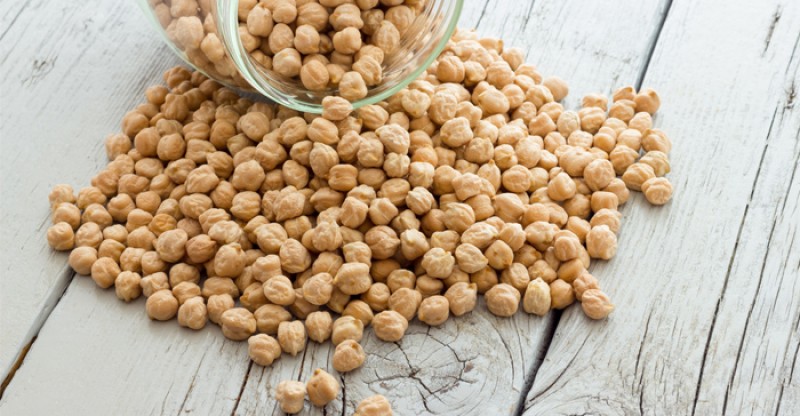



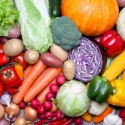

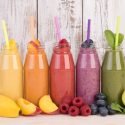
Thank you for the recommendations about cooking chickpeas!
Awesome article! Chickpeas are amazing!
Can the people with diabetes eat chickpeas?
I have just discovered how good green chickpea hummus is! I like the flavor better than regular hummus. It is so good and apparently very healthy as well. I need magnesium, zinc and other supplements as I was low in these and I am thrilled that hummus is such a good source of these nutrients!
I want to get some green chickpeas to incorporate into other meals as well.